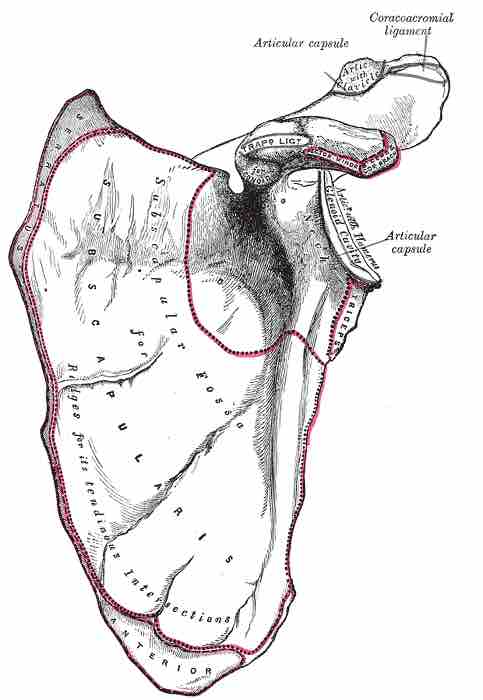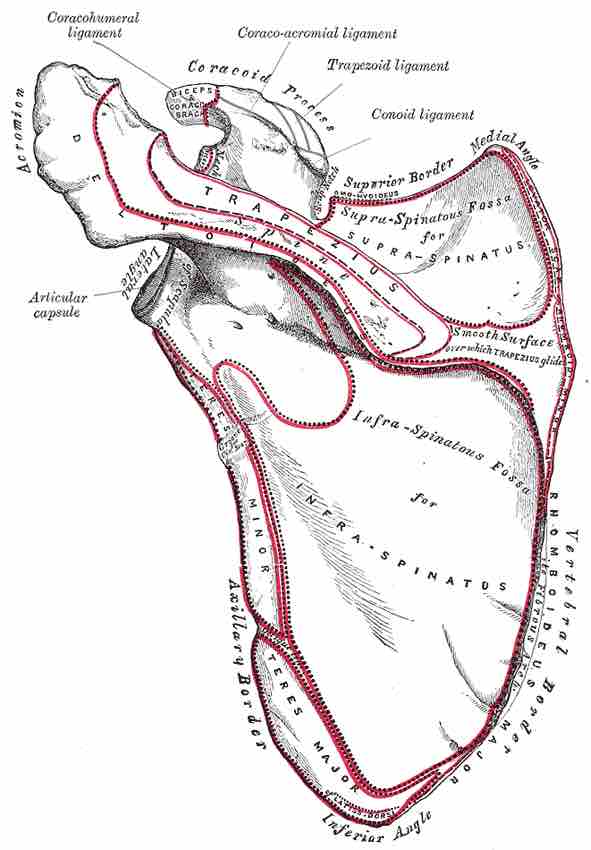The scapula, or shoulder blade, is a flat, triangular bone located to the posterior of the shoulder. The scapula articulates with the clavicle through the acromion process, a large projection located superiorly on the scapula forming the acromioclavicular joint. The scapula also articulates with the humerus of the upper arm to form the shoulder joint, or glenohumeral joint, at the glenoid cavity.
Due to its flat nature, the scapula presents two surfaces and three borders; the front-facing costal surface and the rear-facing dorsal surface, as well as the superior, lateral, and medial borders.

Costal surface
Costal surface of the left scapula. The subscapular fossia for subscapularis, serratus, pector minor regions are highlighted.
The serratus anterior originates from the costal surface, which also provides an attachment for the subscapularis muscle. The dorsal surface gives origin to the supraspinatus and infraspinatus muscles, and inferiorly to the teres minor and major. It is divided by a ridge-like structure called the spine of the scapula, from which the deltoid and trapezius muscles originate.

Dorsal surface
Dorsal surface of the left scapula.
The lateral border is the thickest border of the scapula and extends downwards from the glenoid cavity. Immediately below the glenoid cavity is the infraglenoid tuberosity, which is the origin for the long head of the triceps brachii.
Immediately above the glenoid cavity is the supraglenoid tubercle and its associated hook-like coracoid process, from which the long and short heads of the biceps brachii originate.
Four muscles attach to the medial border of the scapula. To the anterior side the serratis anterior attaches, whilst posteriorly the levator scapulae and rhomboids minor and major attach.